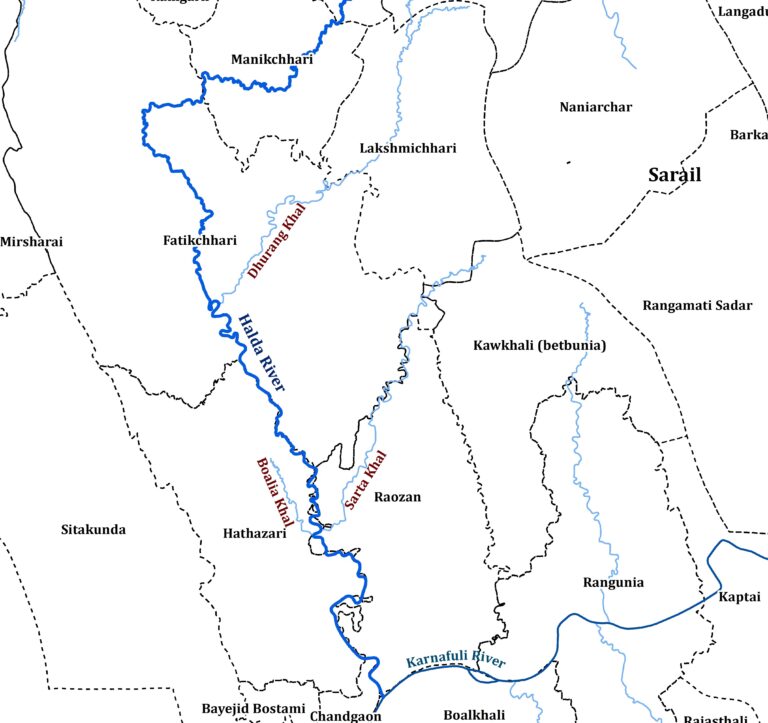The Halda River
Ecological Description of the Halda River
The Halda River is one of the vital rivers in Bangladesh. It starts from the hilly areas in Ramgarh Upazila under Khagrachhari District. Then, the river outfalls the Karnafuli River. The length of the river is nearly 106 km while width is nearly 135 m. Halda, a meandering river, has a flood slope of 17 cm/km. Three tributaries of the Halda River are Dhurang, Boalia as well as Sarta Khal.

Characteristics of the Halda River
Moreover, it is a tidal river like Pasur. The change in WL during tide is around 2 m. The highest river flow is roughly 1450 m3/s. Mainly, it is less during February-April. Besides, the flood occurs by overtopping its banks. The embankment acts as a barrier for the flood. In addition to that, erosion takes place by eroding the riverbank but the rate of erosion is less compared to the major rivers like Kosi, and Gorai. In Bangladesh, the only spawning ground of three major carps namely, Catla catla, Laheo rohita. This ground has long been the source of naturally produced carp fry in the country. As per the definition of the bio-ecological zone, the river lies in the zone of CHTs. Additionally, Halda is one of the major sources of freshwater for the port city of Chattogram. The CWASA supplies 2 million gallons of water daily from this river.
Ecological Importance of the Halda River
The river is ecologically very important. This is the only of its kind in the world from which fishermen can collect fertilized eggs directly. The Halda River is the sole source of fertilized eggs of major Indian carps, as it provides favorable physio-chemical factors for the spawning during the monsoon between April and June. About 60% of the country’s pond carps culture depends on the fish fry naturally produced in the River that has insurmountable economic and nutritional value.
Halda River provides all the four ecosystem services (provisioning, regulating, supporting and cultural) which is a blessing for mankind and provide food, especially fish, drinking water and water for irrigation for crop production. People also uses this river for fish fry production, fishing activities, household uses of water, transportation, and sand quarrying. The source of the primary production of the fish and habitat of different categories of fish and aquatic species in this river. It aids in the nutrient cycling process of the area and soil formation as well as the carrying of sediment from upstream. It also helps in soil formation within the river territory.
Other Benefits
Besides, it also controls the flood. It stores the water during the peak season and reduces the intensity of the flood. Water in the river also acts as a groundwater recharger during the dry season and controls the erosion by stabilizing its banks by storing the sediment. Also, different types of plants grow based on the water and ecosystem of the Halda River that stores carbon which is helpful for the ecology as well as the human being. Helps in maintaining the balance between ecological and hydrological processes.
The Halda’s pivotal role in the local and the national income generation makes this river a natural resource of immense economic value. Besides, the Halda has unique cultural and spiritual values. During the egg collection season (April–July), the banks of this river take a characteristic festive look. Egg collection is based on indigenous tools and techniques developed over generations by blending religious beliefs with experience. It helps in building the indigenous knowledge of egg collection techniques and tools and to spread the ideas centrally.
In overall, the ecological importance of the Halda River is highly connected to the people and society as it provides the basic materials for a better life, the safety of health, social bonding and social security through the easy access to resources.
